← Back to projects
Auth0 Onboarding Experiment
Auth0 2018
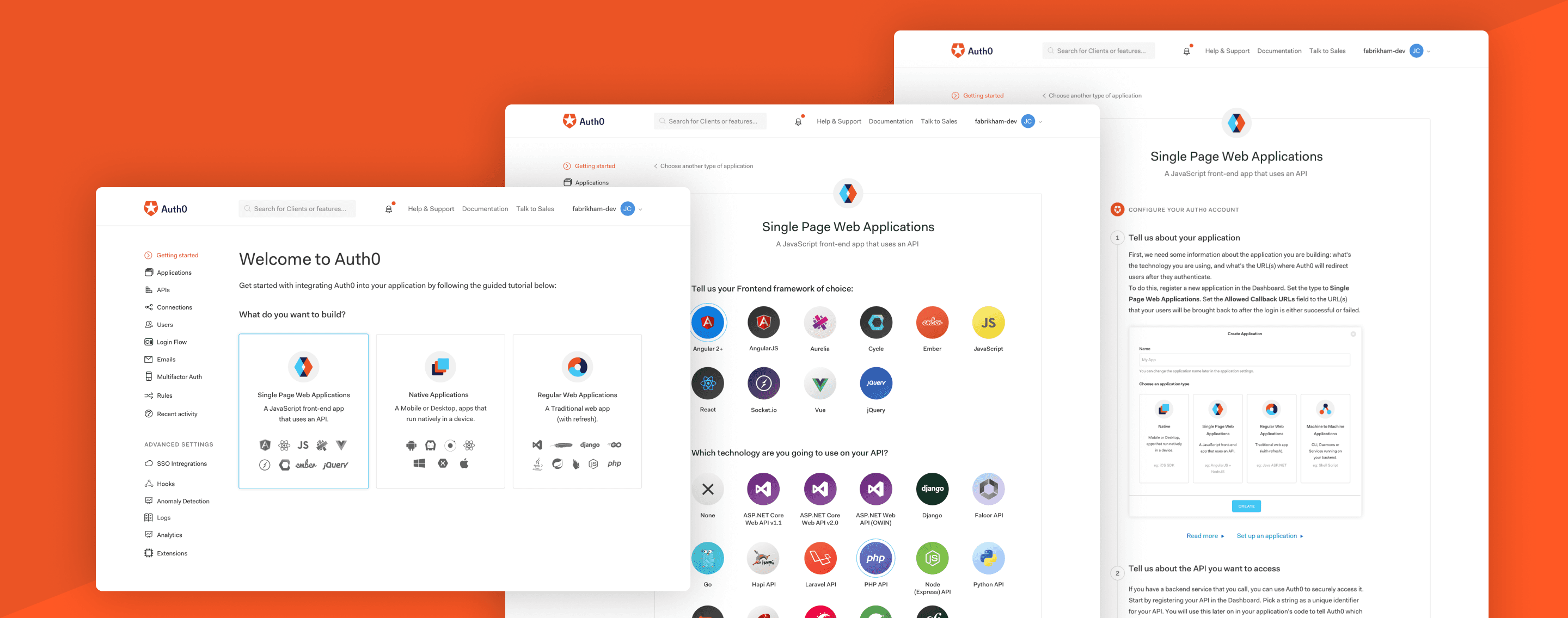
What problem where we solving?
At Auht0 our marketing engine drives a big amount of traffic to our site content, and we also do a good job of turning traffic into signups. But, once developers sign up there’s a lot of time from that moment until they integrate with their application. A “quality subscription group” is defined when 10 or more unique users login to their account. We use that as a measure of “quality” signups because it is something we can measure within the first 30 days after the account creation that ends up being a pretty good proxy for who will continue to use the product beyond the initial trial period. Our goal was to improve our activation metric.
Working together with our Growth team we knew, based on our research and data points, we needed to start helping people in their natural tendency to jump in and play with the product, from the time they sign up until the time they develop a habit of using the product, which for us ment until the account has a regular, continuous stream of end-user logins we ought to be providing a purposeful experience that guides and focuses the user on just the things they need to do get setup for success.
Team
Growth Marketer
Copy writer
Full-stack engineer
UX Researcher
Product Design Lead (myself)
How did our experience looked?
When users signed up they were dropped into a dashboard that shows the activity on your account. Now since you just signed up, you won’t have had any users, so everything will be greyed out or show zeros. Growth Activations experts derisively call this type of page an “empty state” experience. In other words, everything is more or less blank. There is nothing already set-up, no pre-configured sandbox, and there’s a lot of work ahead before this page will show anything useful. While this login activity page may be useful for an admin that has already deployed the app, it isn’t helpful for the new developer to Auth0.

We conducted qualitative research comparing those who succeeded with getting their first user login to their applications and those who did not, we found that there was significant uncertainty and doubt amongst the developers about whether they had in fact located the “right” documentation for their given use case. No one had trouble finding documentation, but they found so much documentation, oftentimes loaded with new terminology they weren’t familiar with, that it appeared to be an impediment.
So on the first experiment, we tried a low effort approach that consisted on putting all the steps and documentation already available for them on a “Getting Started” page depending on the application they wanted to integrate Auth0 with.
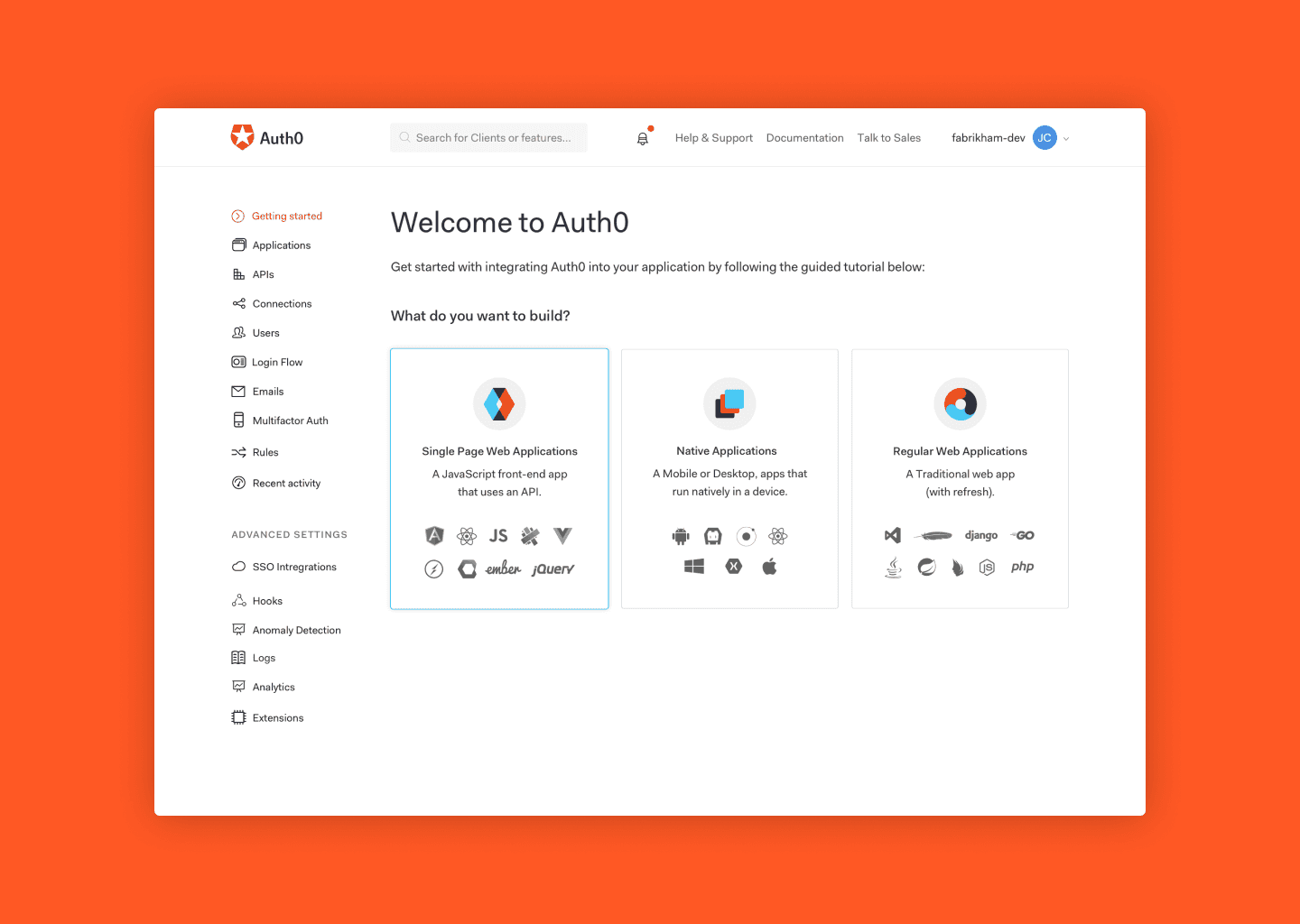
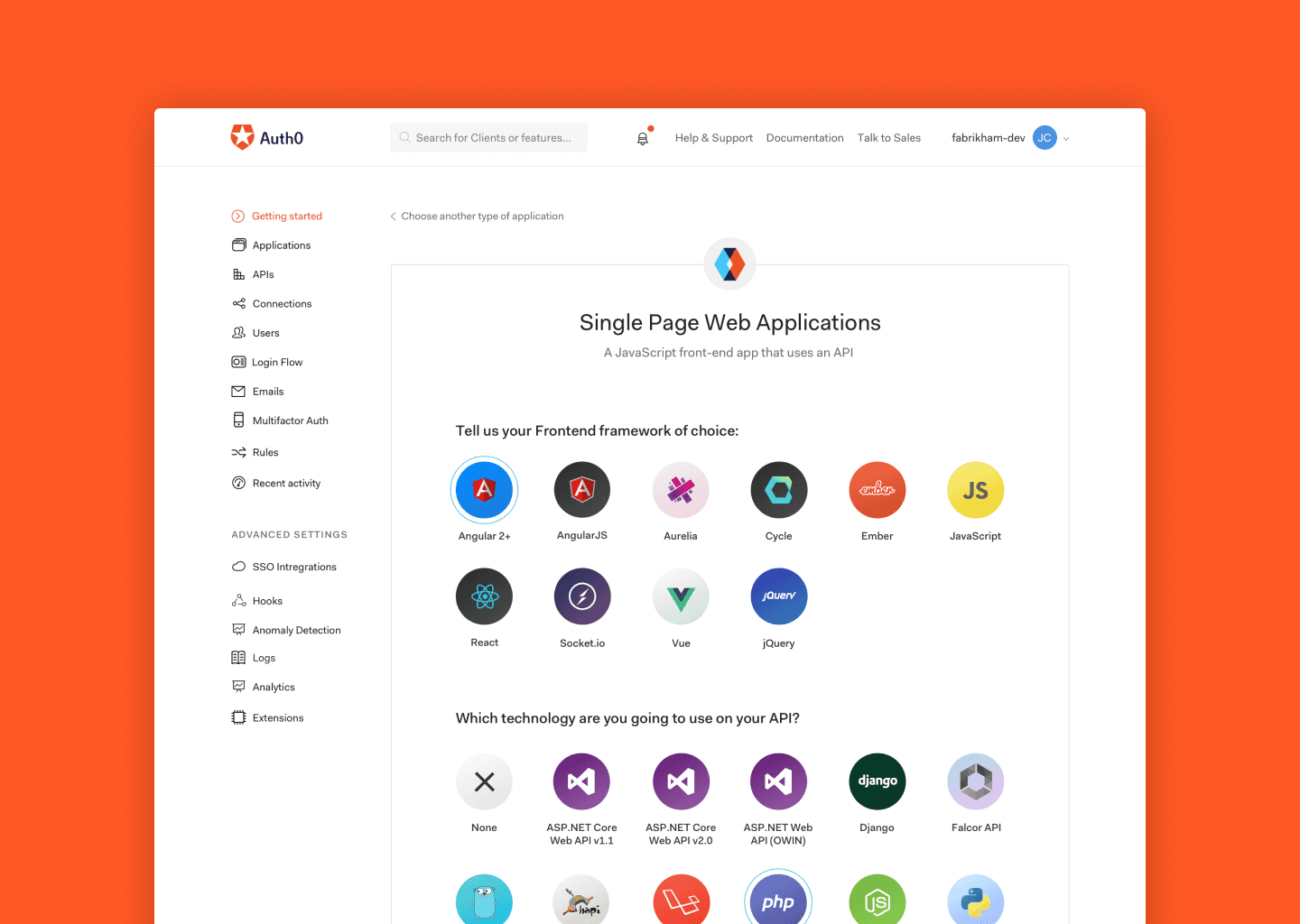
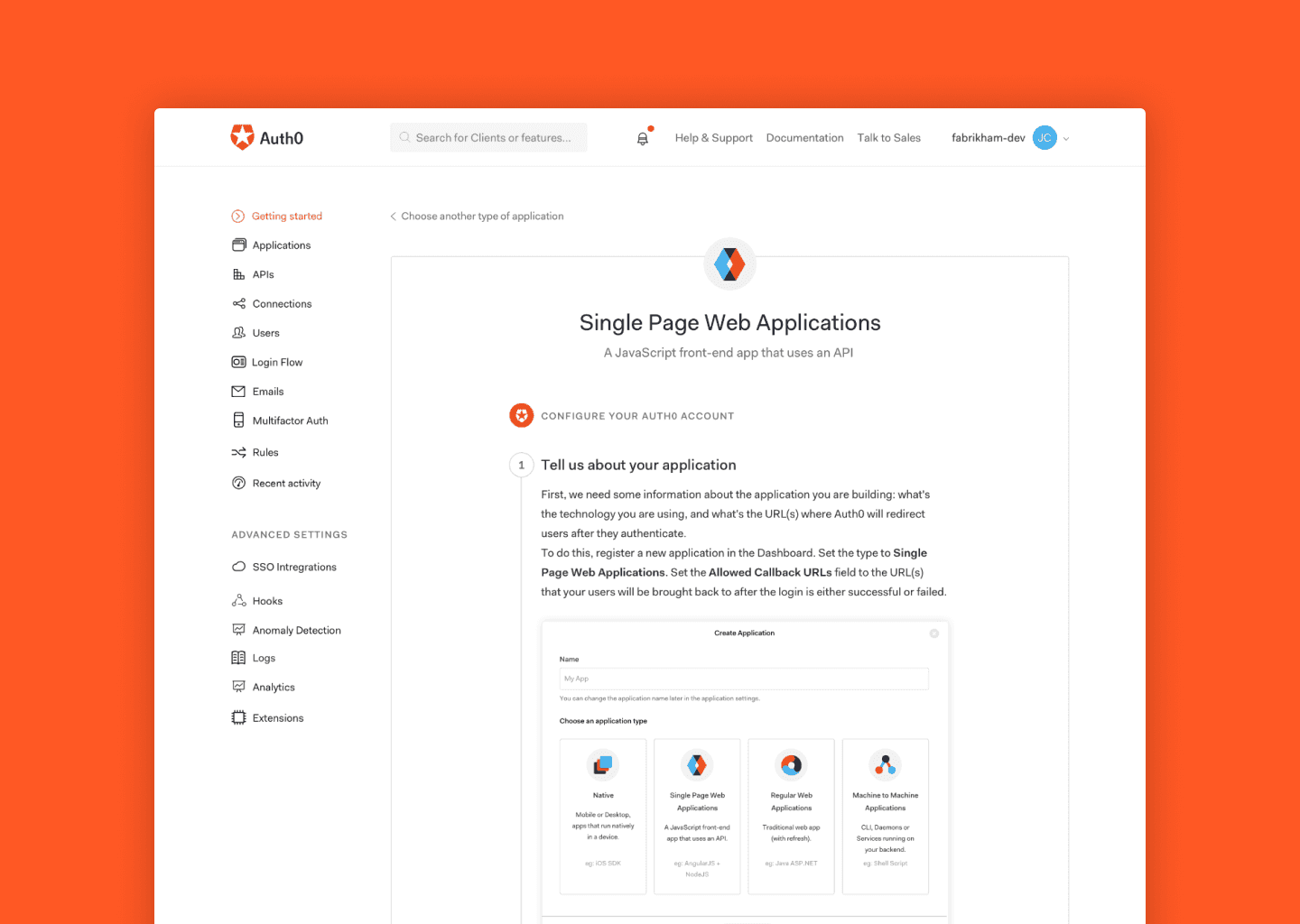
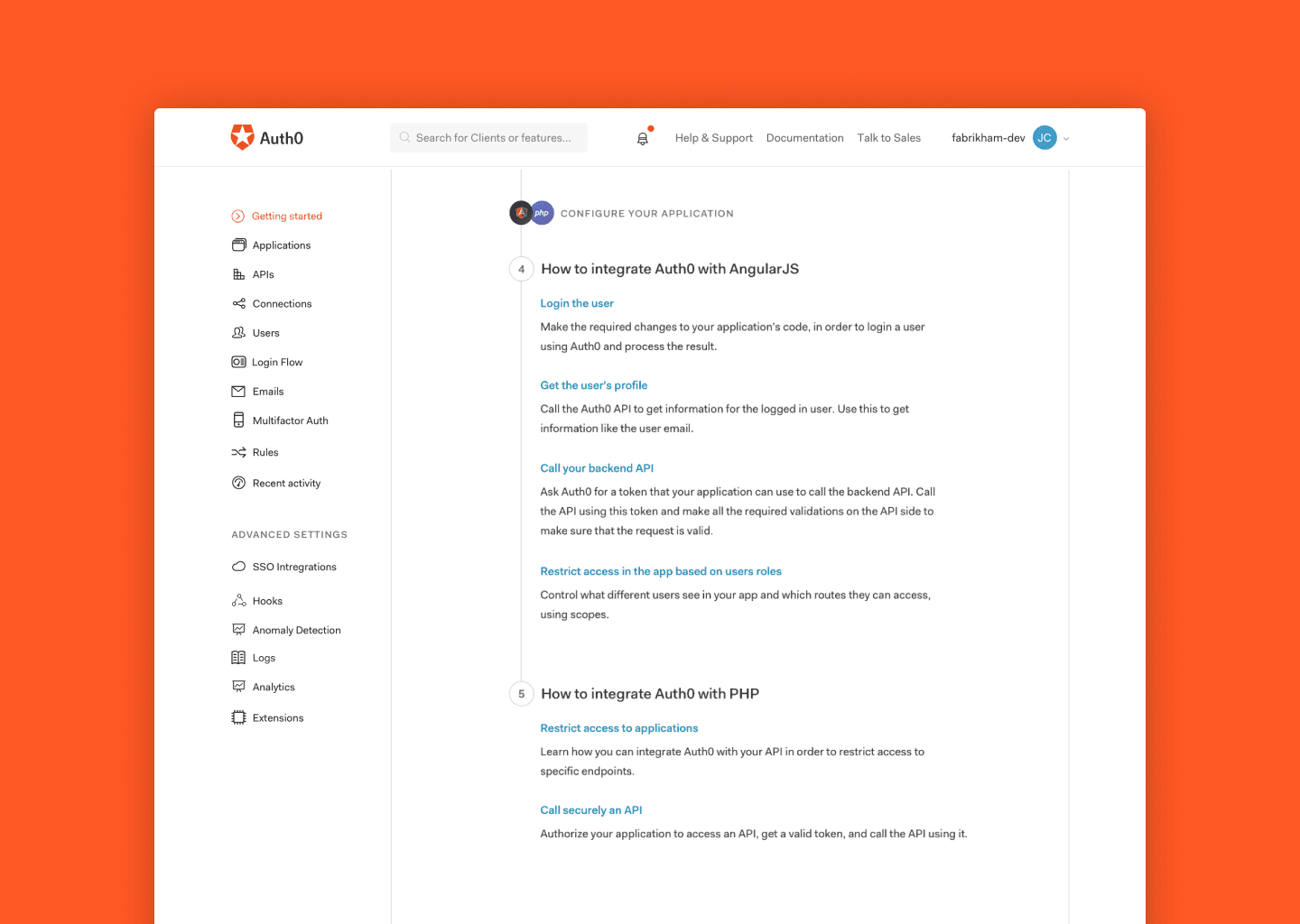
The results
→ 60% engaged with the experience by selecting their application types.
→ Of those who engaged, 89% continued on to reach the results page.
→ 65% of engaged users expanded on steps.
→ 54% of engaged users clicked on setup links.
The further the person went down the experience, the more likely they were in general to be someone who reached their first login users or activation (10 unique logins). We continued to experiment, and tried a more complex one that included a demo for users to play with and was aimed to teach users about how Auth0 works by showing the teps with an example, in an effort to make the integration process easier.
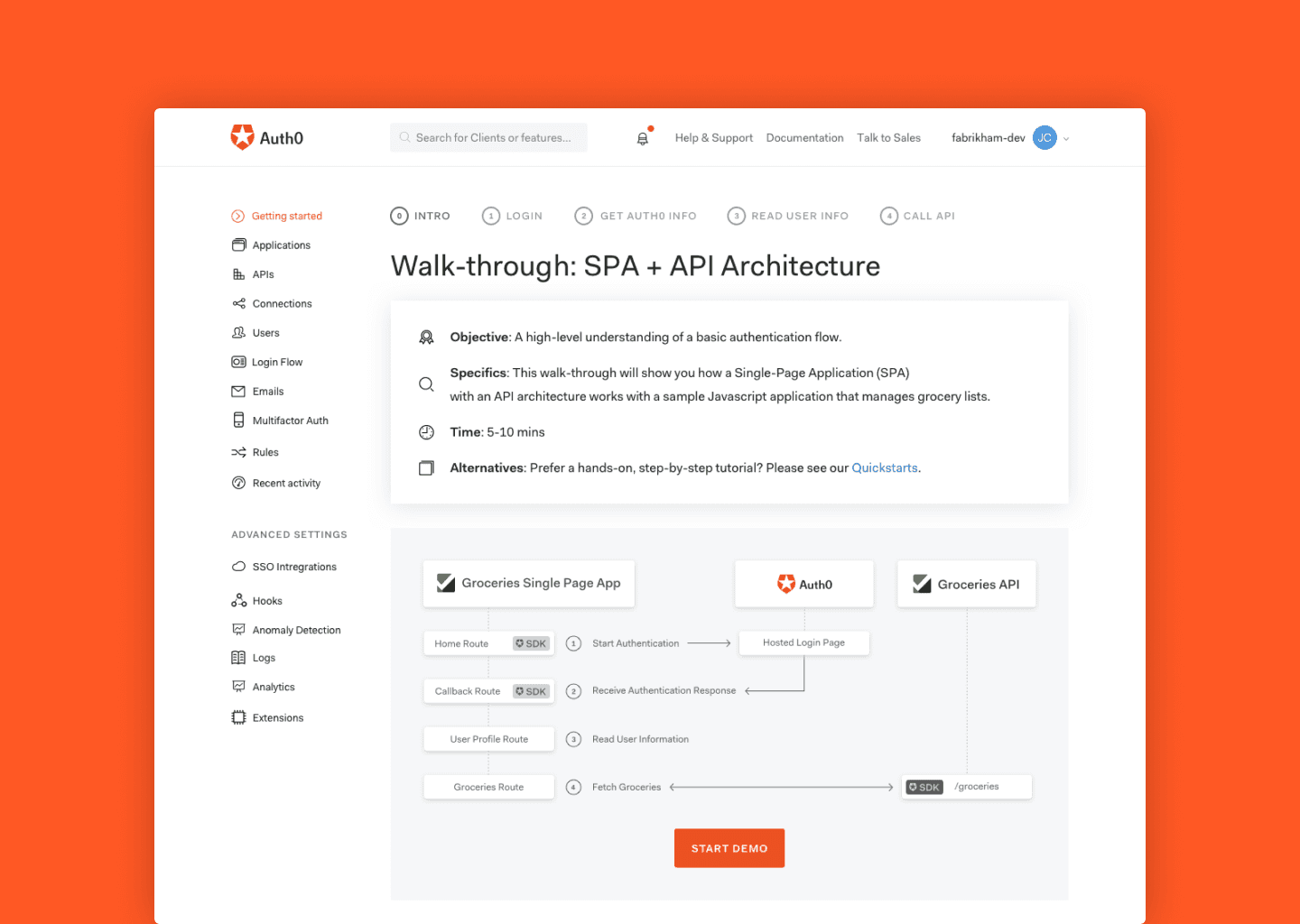
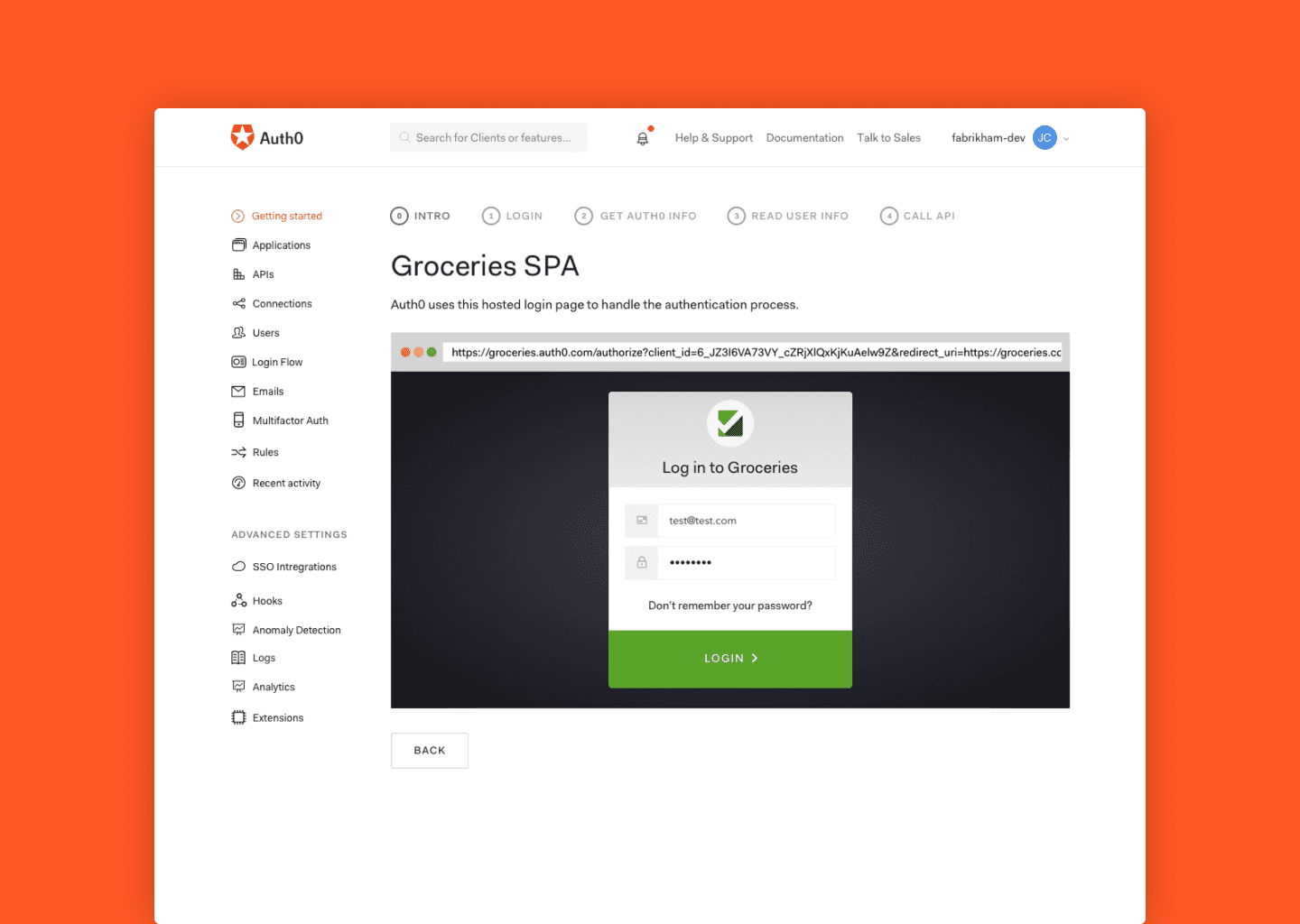
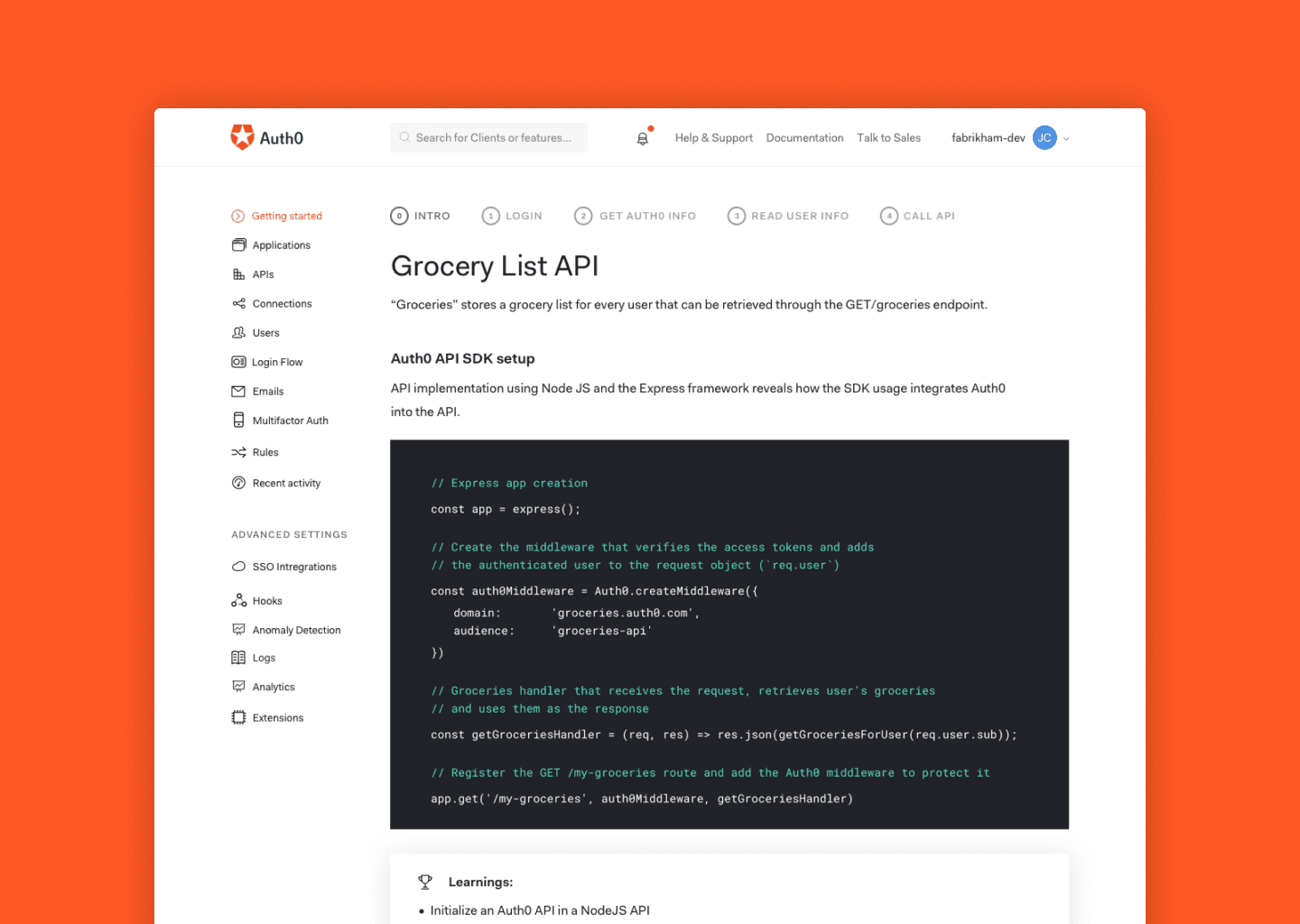
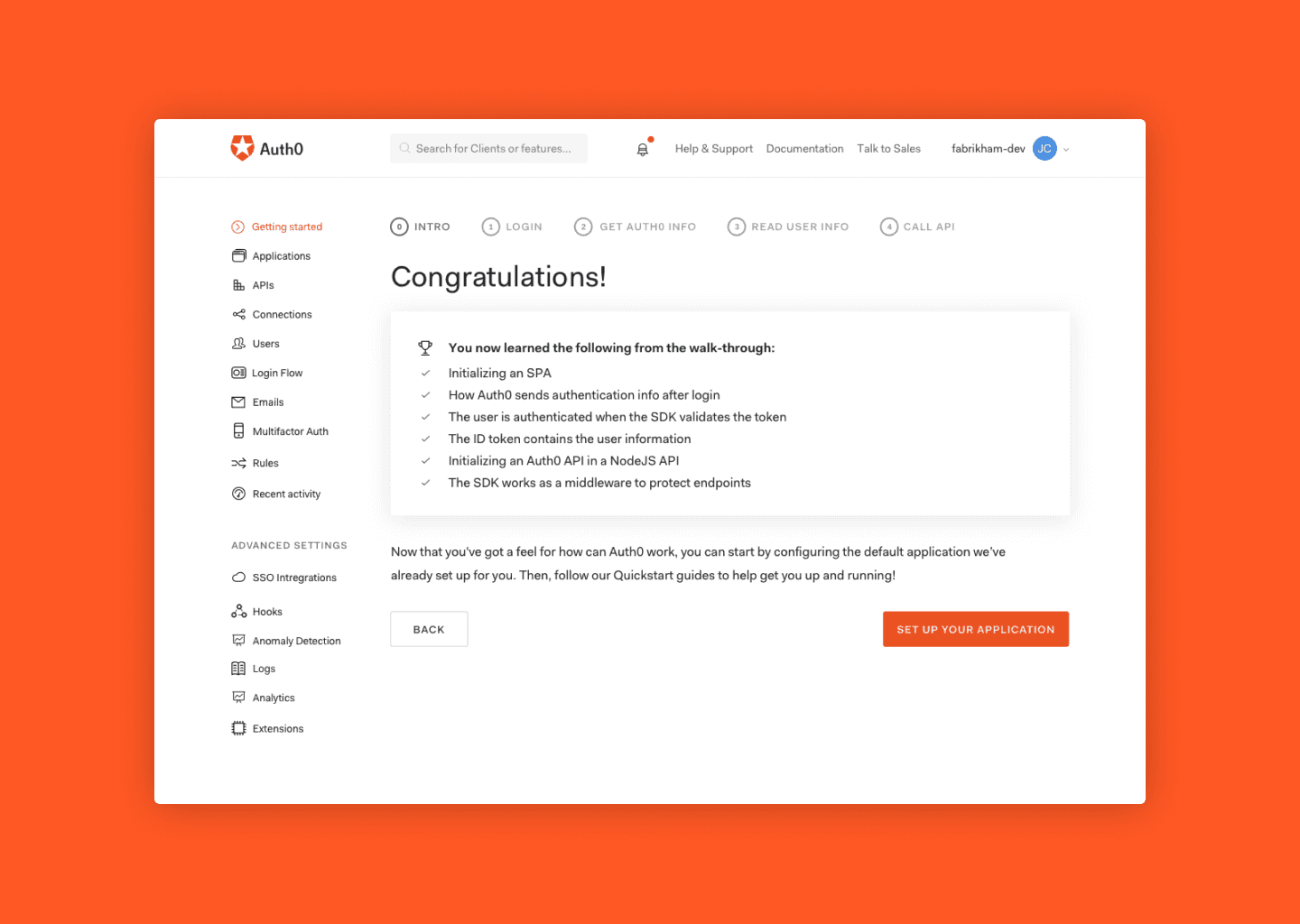
← Back to projects